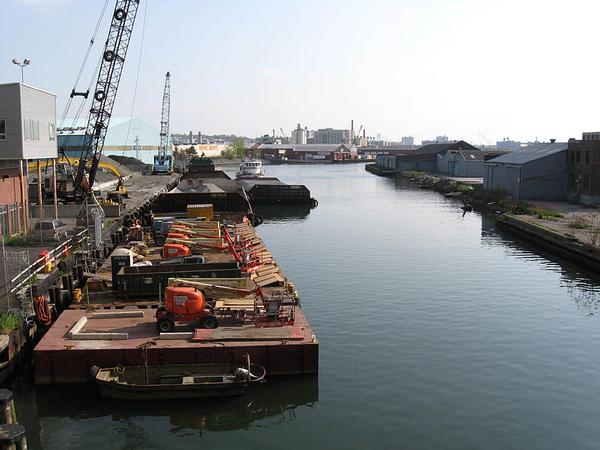
Photo by: Jim Henderson
The Gowanus contains PCBs, PAHs and seven metals in concentrations that pose a risk to human health.
The Environmental Protection Agency on Monday released its formal, final decision on how to complete the Superfund cleanup of the Gowanus Canal, a waterway whose depths contain toxins from long-ago industry and more recent sewage overflows.
The $506 million plan will involve dredging hundreds of thousands of cubic yards of contaminated sediment and processing it off-site. In the face of community opposition, a plan to treat some of that material in Red Hook was scrapped.
Two basins within the canal where ships can turn around will also be dredged.
Built in 1848 around the footprint of Gowanus Creek, “the canal quickly became one of the nation’s busiest industrial waterways,” according to the EPA. Gas and coal companies, chemical and cement manufacturers, paint and ink factories, machine shops and tanneries discharged waste directly into the canal.
While these uses faded over time, the canal continued to be dirtied by sewage overflows during heavy rainstorms or other events when sanitary sewage from homes and rainwater from street drains combined to overwhelm the city’s water treatment plants.
According to a report issued today, the EPA found in the canal a brew of polychlorinated biphenyls or PCBs, polycyclic aromatic hydrocarbons or PAHs and seven metals (barium, cadmium, copper, lead, mercury, nickel and silver) “contributing to unacceptable ecological and human health risks.”
EPA says it has “identified numerous parties that are potentially responsible for the contamination,” whom it will try to make pay for the cleanup. The cost could increase once work begins: Some of the walls that line the canal could collapse after the dredging and require replacement.
Meanwhile, there are ongoing efforts to prevent new pollution. EPA says in order to prevent sewage runoff from fouling the canal again, the city will need to build an 8-million-gallon tank and a 4-million-gallon tank to capture excess stormwater. And National Grid is responsible for cleaning up several old gas plants in the area to prevent runoff from those sites getting into the canal.
Even with those measures, it’s not likely the canal will ever be safe for the activity that city surveys suggest is the most common use of the canal: fishing, mainly for food.
“Because the selected remedy will not fully eliminate the need for fishing advisories due to contaminants from New York Harbor, the EPA intends to continue to coordinate fishing advisory education and awareness efforts with the appropriate governmental agencies,” the report reads.







